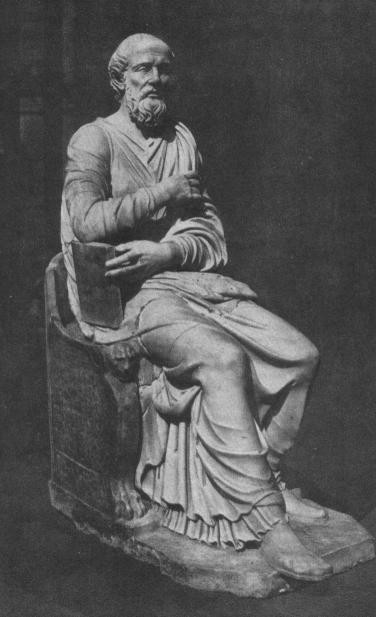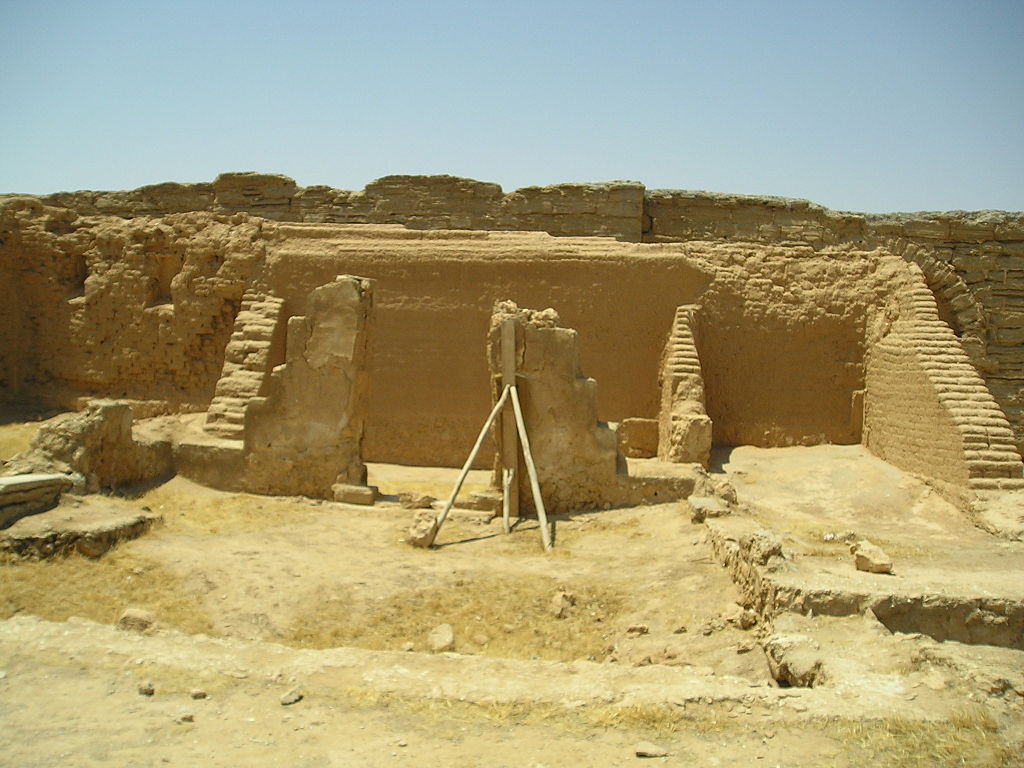Church orders
"Church orders" are a genre of Christian literature in which someone claiming authority gives instructions for church organization and worship. Perhaps the earliest (we aren't sure when it was written) is the Didaché or "Teaching of the Twelve Apostles." (The Hayes Church and Society in Documents text has a translation.
Hippolytus
Of the early church orders, the most influential has been the "Apostolic Tradition." This text includes two presentations of a liturgy of the eucharist. In the early twentieth century, scholars began ascribing this work to Hippolytus of Rome, who flourished around CE 215. Had this ascription and dating been correct, this would have been by far the earliest text to describe in some detail the wording of a Christian eucharistic liturgy. Well into the 1980s this work was widely seen to be an authoritative example of early Christian liturgical tradition. It therefore had a significant influence on liturgical revision in the mainline churches. (For Canadian Anglicans, Eucharist Prayer #2 in the Book of Alternative Services is inspired by it.) 
The ascription of this work to Hippolytus rested largely on the fact some inferences from the statue pictured here. Inscribed into its plinth is a list of titles of writings, some of them resembling those known to have been written by the historical Hippolytus; one of them is called the Apostolic Tradition. Aha! the scholars said. This was a statue of Hippolytus, and whoever carved it must have known that he wrote the work that we know by the name "Apostolic Tradition"! But there are a number of peculiarities about this statue, and it seems unlikely that it was originally intended to represent Hippolytus. Moreover, the work that we know as Apostolic Tradition doesn't have that title in the manuscript texts that we have. Accordingly, over the past twenty years the early dating and authorship of the work have come under pretty severe criticism. A likely hypothesis is that the work had no single author, but brought together a number of texts from different sources, and never represented the practice of any actual historical Christian community.
Early church organization and worship
González, in Story of Christianity chapter 11, indicates that there are very few surviving sources for early Church order, but then goes on to state a number of generalizations about what Christians all agreed on. Recent scholarship shows that there was likely a far greater diversity of practice in the early Church than he acknowledges. Early Christian worship is a difficult topic to study, because the various denominations are invested in quite different interpretations and traditions, all of which require considerable deconstruction.
Church buildings
But González is probably right in affirming that Christians before the fourth century generally met in private homes for worship.
An exception to this rule is the earliest extant known Christian church building, which was excavated in the 1930s at Dura-Europus, a Roman frontier outpost which is now (unfortunately for researchers and Christian tourists!) in Syria. It can be dated before 257, since that's when the outpost was destroyed by the Persian military. At the left, links are given to further information. Below is a photograph of the church site, copied from Wikipedia at https://en.wikipedia.org/wiki/House_church#/media/File:DuraEuropos-Church.jpg under a Creative Commons licence. The chapel was the room at the right. Many artifacts from the church are now on display at the Yale University art museum, which enforces a strict copyright control on their reproduction, so you don't get to see what they look like.
